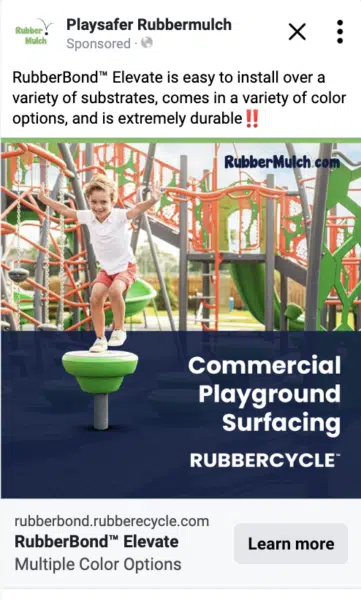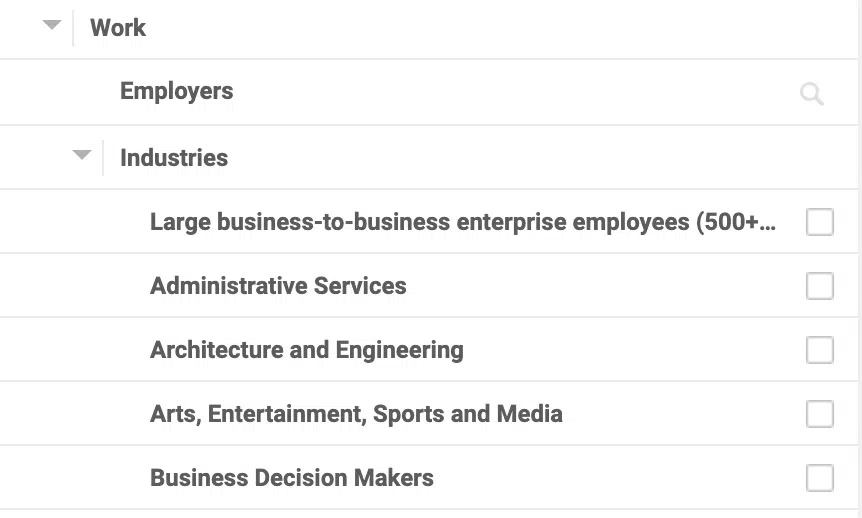What if you could get your ads in front of your ideal customers for a fraction of the price?
LinkedIn Ads is well known for its high costs compared to other platforms.
Still, there’s a way to target a similar B2B audience on Meta, where advertising costs are significantly lower.
But this assumes two things are true:
- You have the fundamentals in place: a great offer and landing page backed by audience research, simple campaign structure, strong creative and conversion tracking. In other words, you approach advertising as a marketer rather than a media buyer.
- You’re willing to make the trade-off for cheaper acquisition costs. While you won’t have the precision targeting of LinkedIn, just because your target audience is browsing Instagram doesn’t mean they stop being who they are professionally. You may not be catering to them in that same environment, but they still have those needs and will pay attention to something interesting enough.
If the cost of advertising on LinkedIn is prohibitive or you can’t meet the minimum requirements for some of the targeting settings – and you meet these two criteria above – then you might want to consider this play.
I find that you really don’t need to complicate creative since simple banner ads work well in B2B. Maybe it’s because business consumers often seek something that’ll help them advance or work more easily.

It’s different when you’re trying to get somebody to book a dentist appointment or learn about an insurance plan, where you need to convince them to make a call.
But in B2B, you’re selling something that will make somebody’s life easier without friction. It takes an investment on their part, but B2B audiences are open to that.
You can use videos as you do with B2C lead gen and ecommerce, but going after high-production values isn’t necessary.

It’s more about putting the right message in front of the right consumer. They’re on a different platform, but they’re still your target audience. And if you speak to them, they’ll take action.
Depending on the type of person you’re trying to reach, you can keep it as simple as having the right messaging.
We have an agency client that sells home organization products, so we try to reach contractors, developers, interior designers and other professionals. I sometimes find that even a good iPhone photo of the product with the right messaging will work better than a studio shot.
Dig deeper: Meta advertising: 5 best practices for 2024
Why B2B lead gen on Meta is easier than you think
Particularly for B2B lead gen, you likely have assets that can be repurposed quickly by resizing and making a few modifications.
Think about what’s important to the person you’re selling to and how your product will make their life easier. Try to speak to that in the creative and copy of the ad.
If this sounds like a core B2B marketing strategy, that’s because it is. It’s foundational work that successful B2B brands do before they ramp up ad spend.
Can I run B2B ads on Meta with a smaller budget?
If you’re considering this strategy because you have a smaller budget, I encourage you to consider dynamic creative: one ad unit with several ads and you let the system mix and match instead of making multiple standalone ads. I find this often works better.
Get the daily newsletter search marketers rely on.
With ecommerce and B2C lead gen, we tend to do a lot of broad targeting. I find more success in B2B when we use customer lists and create lookalikes to target, as well as when using Meta’s interests and detailed targeting.
We just launched a campaign for a client selling playground equipment, so we’re targeting people who work in municipalities and schools. Similar to LinkedIn, though not as detailed or granular, Meta has the option to target people based on:
- Where they work.
- What their role is.
- Which industry they’re in.
So it’s just a matter of combing through that and building enough of an audience. We prefer not to make multiple ad sets for each one and instead stack them up into one large audience, which we find works well and brings in quality leads.

You will likely get more junk leads than if you were selling on LinkedIn. But overall, it’s still cheaper to do this on Meta, even after factoring in that difference.
We’re also running ads for a company that rents large office machinery with monthly service, toner, etc. With this, we’re targeting people who work in nursing homes or as office administrators, so it’s based on their role or the type of company they work in.
But we’re also looking at interests that could be related.
Is there an industry publication that people in that line of work tend to subscribe to? If so, you set that publication’s company as an interest.
At its core, targeting professional audiences on Meta is really just about customer lookalikes, lead list lookalikes, interests and profession-based targeting.
My audience targeting guidelines
Here are some additional guidelines I follow when running B2B lead gen campaigns on Facebook and Instagram. Your mileage may vary, so test as needed.
- If you’re a regional business, you’ll want to layer in specific locations.
- I prefer not to use embedded lead forms because they tend to return more junk leads. We typically send traffic to a dedicated landing page and try very hard to get that page to convert well by speaking in a language similar to the ad creative itself.
- If you are going to utilize embedded forms, add questions to add friction to the form and qualify potential leads.
- Ensure that all your ads have UTM parameters included in the landing page URL so that when a lead comes in, you know which campaign and ad it came from.
- Feed that lead data back into HubSpot, SalesForce or whatever CRM you use so that you can see where you’re getting the most valuable leads that turn into sales.
- Consider adding to your audience selection website visitors that did not convert already, or video viewers and page engagers. This way you can target anyone who showed enough interest to engage with your media but not enough to convert.
New ways to target B2B audiences on Meta
Until now, everything I’ve shared has been from the lens of using standard conversion campaigns with a lead focus.
Now, you can also use tailored campaigns with lead objectives, which is like Advantage+ shopping for lead generation. It strips away a little bit of traditional advertiser control, but it’s worth testing – especially with larger budgets.
You can also create a campaign with a call objective if you don’t want to form submissions as your primary conversions.
If you do things by phone, use this with a call tracking number so that the CTA leads to a call, and you can monitor where your inquiries come from. The system will also track this and optimize for the best calls if you feed it the right data.
Meta has also been pushing Advantage+ audiences, which basically borrows from Google’s Performance Max in that they become audience suggestions (signals).
The system will use this as a base, but it will go beyond and find whoever it believes is the target consumer for what you’re selling.
Test before you divest
I understand the skepticism around using Meta Ads for B2B lead generation advertising.
Still, the principle behind my advice remains the same: People browsing LinkedIn don’t stop being (insert profession here) when they start browsing Facebook or Instagram.
As with everything ads-related, I advise you to try things out for yourself before writing them off.
If you don’t have a dedicated budget for experiments, use a small portion of your allocated budget just to get your feet wet. You may not achieve statistical significance, but you’ll likely see whether there’s something worth exploring further.
Psychologically speaking, you may even stand a better chance of getting them to pay attention on a platform where their guard doesn’t have to be up due to the prevalence of low-quality offers and products.
Opinions expressed in this article are those of the guest author and not necessarily Search Engine Land. Staff authors are listed here.
Source link : Searchengineland.com
